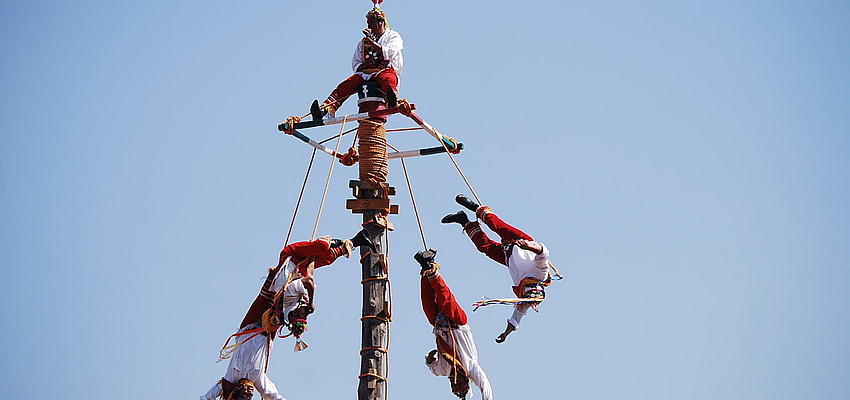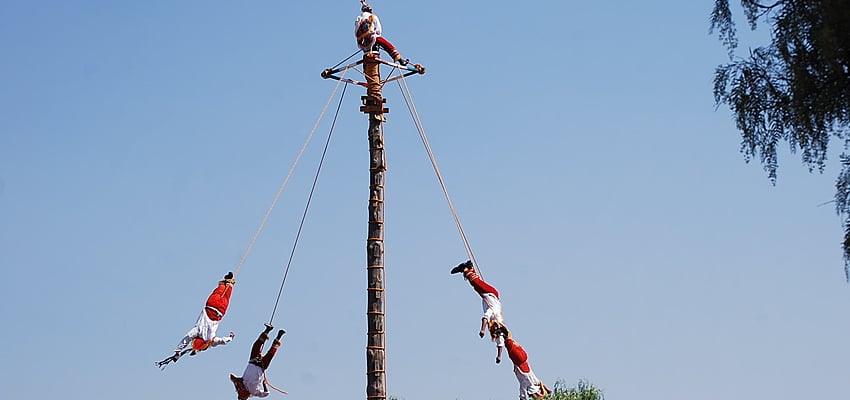


In the ethnic landscape of the country in which there are easily more than sixty different communities, you will discover, for example, Totonac civilisation which has fascinating culture and beliefs during your trip to Mexico.
If during your trip to Mexico you go to the area of El Tajín, an old man might come and sit down next to you and reveal the secret of one of nature's great wonders.
Staku-Luhua was a Totonac serpent that was loved by the inhabitants of El Tajín. It did them a lot of favours and regularly made the trip to the sun by flying, thanks to its white feathers. He asked the stars for rain and warmth for a good harvest. The wisemen of El Tajín wanting to thank the sun for all its kindness sent the serpent for a final journey. This time, it had coloured feathers. Days went past, the serpent hadn't returned. One day, an unprecedented storm threatened the inhabitants of El Tajín. When the deluge was over, the inhabitants looked to the sky and took the coloured feathers of Staku-Luhua. It's the sun that promised eternal abundance for the Totonac fields. As a sign of friendship, he had transformed the feathered serpent into a rainbow.

Often when you go to the most touristic areas of Mexico such as Teotihuacán, for example, you will have the chance to see a very impressive ritual performed by men called the voladores.
From the top of a 30 metre high pole, "voladores" throw themselves into the air. This Totonac ritual is very codified. Whilst the leader of the dance plays the flute, at the very top of his platform, playing music dedicated to the four cardinal points, the four "voladores" throw themselves into the air with their hands up in the sky. Held by a rope at the waist, they each have to turn around the pole thirteen times, 52 in total amongst them. Like the number of years of a calendar cycle. The spectacle of these acrobats is amazing.